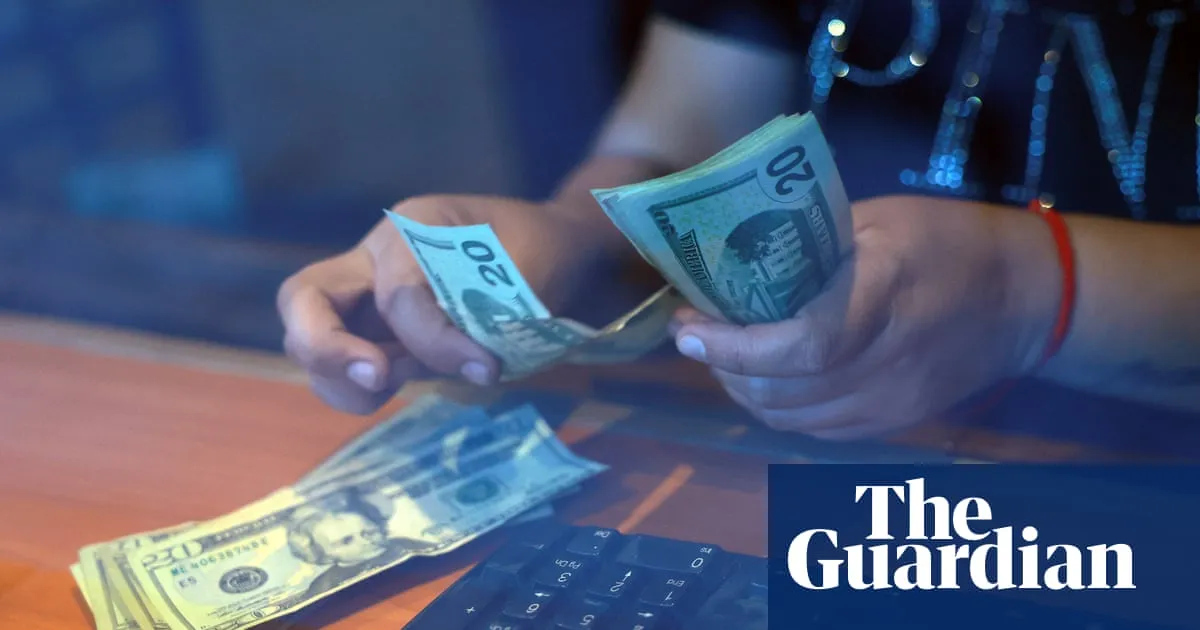
In the wake of Donald Trump’s controversial “liberation day” tariff announcement, the global economy is grappling with significant fallout. The repercussions are evident as stock prices plunge, a sell-off in bonds unfolds, and currency chaos results in the erasure of trillions of dollars in wealth within just days. On Friday, the dollar fell by over 1% against a basket of currencies, marking its lowest level in three years and compounding nearly a 10% decline since the beginning of the year. In just one week, the dollar has lost approximately 3 cents against the pound and 4 cents against the euro.
Even after the president's partial U-turn—freezing tariffs at 10% on all U.S. imports except those from China for 90 days—markets swung from relief rallies to fresh routs. Investors are now left questioning the once-unthinkable: could the U.S. dollar be losing its status as a safe haven? George Saravelos, head of foreign exchange research at Deutsche Bank, remarked, “The damage has been done. The market is reassessing the structural attractiveness of the dollar as the world’s global reserve currency and is undergoing a process of rapid de-dollarisation.”
Unlike typical market sell-offs, the current crisis has seen a simultaneous decline in U.S. equities, government bonds—known as treasuries—and the dollar's value. This synchronized downturn is unusual, as investors typically flock to dollars and Treasury bonds during periods of uncertainty and financial distress. For the past 80 years, the dollar has maintained its status as the world’s primary reserve currency, serving as a store of value globally and facilitating trade.
The longstanding belief has been that a currency backed by a robust government, the world’s leading economy, and a respected political system provides unparalleled stability. However, Trump’s imposition of punitive tariffs on both traditional allies and adversaries alike has begun to alter this perception. Raghuram Rajan, former governor of the Reserve Bank of India and ex-chief economist at the International Monetary Fund, stated that the currency crisis arises from investor concerns regarding the U.S. economy and Trump’s unpredictable policy shifts. “There is a worry about how volatile and unpredictable U.S. policy has become,” he noted.
The loss of confidence has sharply impacted the U.S. Treasury market, which is widely regarded as the most critical financial market globally. Typically viewed as a “risk-free” benchmark, the yield on 30-year U.S. government bonds surged from approximately 4.4% to 4.8%—the sharpest weekly increase since 1982. Likewise, yields on 10-year bonds have also risen. Investors are expressing concern that the turbulence reflects the potential economic damage stemming from Trump’s policies, including an increased likelihood of a U.S. recession and the Federal Reserve potentially reducing interest rates.
Amid a broader market rout, where over $5 trillion has been wiped off U.S. share prices, the bond sell-off illustrates hedge funds liquidating Treasuries to mitigate risky trades while investors scramble for cash. Mark Sobel, a former top U.S. Treasury official, criticized Trump’s trade policies, stating, “He is going to harm the U.S. economy and has created a needless crisis.” Sobel believes that while the dollar will likely remain the dominant global currency for the foreseeable future, Trump’s actions risk eroding the foundations of that dominance.
According to figures compiled by the IMF, the U.S. dollar currently accounts for nearly 60% of global foreign exchange reserves, with the euro trailing at about 20%, and the Japanese yen at nearly 6%. Despite recent upticks in the use of other currencies, such as the Canadian and Australian dollars, the euro has made little progress, while the Chinese yuan struggles for global acceptance due to its backing by a communist government.
Within Trump’s administration, some officials view the dollar’s status as the international reserve currency as a burden, suggesting the need for a weaker dollar to boost U.S. exports and support domestic manufacturing. Stephen Miran, chair of the Council of Economic Advisers, has proposed a plan reminiscent of the 1985 Plaza Accord, which could be termed the “Mar-a-Lago Accord” after Trump’s Florida residence.
Typically, trade deficits—where imports exceed exports—balance over time due to downward pressure on a country’s currency. However, the U.S. dollar enjoys an “exorbitant privilege” as the global reserve currency, allowing the country to maintain a persistent trade deficit since the 1970s. Many economists argue that this is acceptable as long as consumers benefit from cheaper imports. Yet, there are growing concerns that the U.S. may attempt to force other nations to compensate for the advantages of dollar dominance, which could severely damage the global economy.
Karsten Junius, chief economist at J Safra Sarasin Sustainable Asset Management, advises that the world should brace for such a scenario, where the U.S. could leverage preferential tariff treatments and access to its market against nations that align with its stance against China. “Countries would need to take sides, which would be particularly difficult for European and East Asian nations,” Junius noted.
In light of the dollar's uncertain future, the European Union is exploring contingency plans. José Luis Escrivá, governor of the Bank of Spain and a member of the European Central Bank's governing council, suggested that the EU could emerge as a more appealing alternative due to its large economic area and stable currency. Pascal Lamy, former EU trade commissioner, echoed this sentiment, stating that Trump’s trade war might encourage countries to collaborate more closely, positioning the EU as a potential leader in this regard.
As the global economic landscape shifts, the implications of Trump’s policies could resonate far beyond U.S. borders. The future of the dollar, once a symbol of unwavering strength, now hangs in the balance as investors and nations alike reassess their strategies in response to a rapidly changing financial environment.